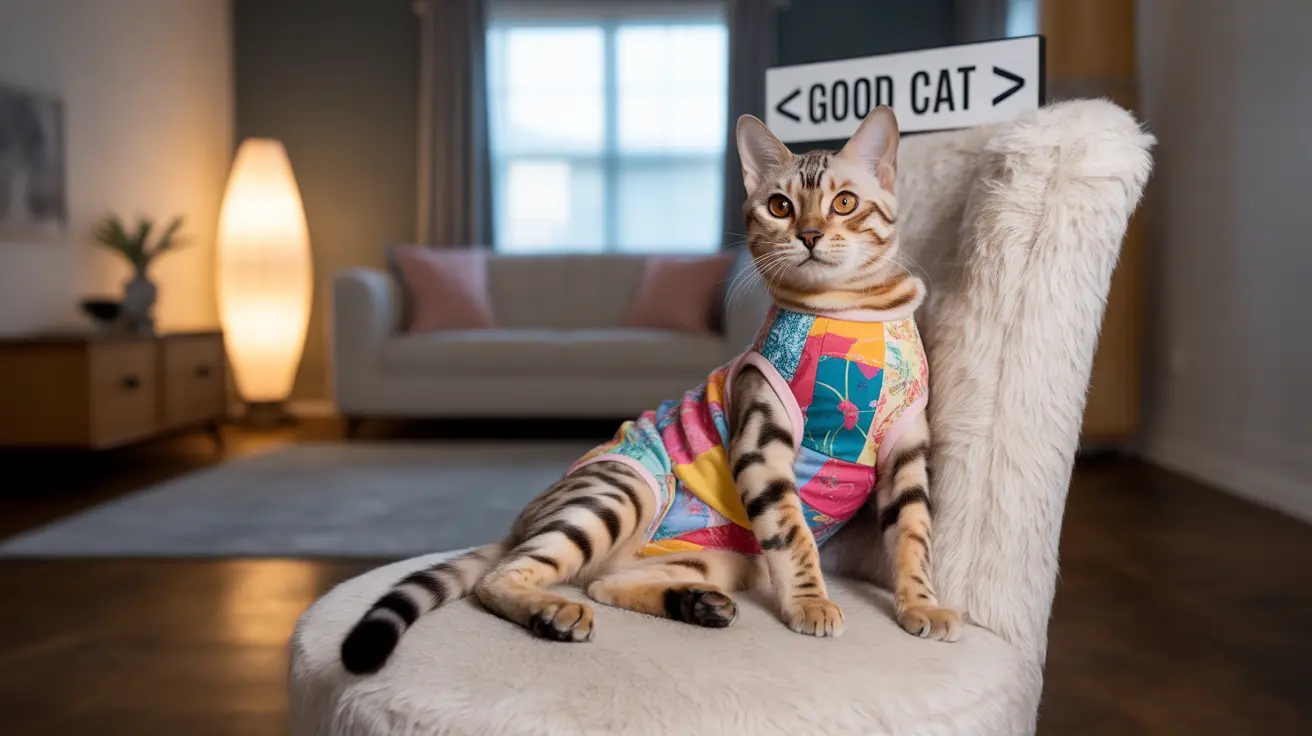Introduction
A cat onesie serves as an essential recovery garment for felines, offering a comfortable alternative to the traditional e-collar while providing protection during post-surgical healing. Whether your cat is recovering from surgery, dealing with skin conditions, or needs protection from excessive grooming, a properly fitted onesie can make a significant difference in their recovery process.
In this comprehensive guide, we'll explore how to create and use cat onesies effectively, including DIY methods, proper fitting techniques, and important safety considerations. We'll also discuss when and why these protective garments are necessary for your feline companion's wellbeing.
Understanding the Benefits of Cat Onesies
Cat onesies offer multiple advantages over traditional protective devices like e-collars. They provide full-body coverage while allowing natural movement, which can significantly reduce stress during recovery periods. The gentle pressure of a well-fitted onesie can also have a calming effect on many cats, similar to anxiety wraps used for other pets.
- Post-surgical recovery protection
- Prevention of excessive grooming
- Management of skin conditions
- Alternative to traditional e-collars
- Maintaining warmth for hairless cats or during recovery
Creating Your DIY Cat Onesie
Materials Needed
- A soft, breathable cotton t-shirt or baby onesie
- Sharp scissors
- Measuring tape
- Marking pen
- Safety pins (optional)
- Elastic bands (optional)
Step-by-Step Instructions
- Measure your cat from neck to tail base
- Select an appropriately sized t-shirt or baby onesie
- Mark and cut leg holes
- Create a tail opening if needed
- Adjust the neck opening for comfort
- Test fit and make necessary adjustments
Proper Fitting and Usage Guidelines
A properly fitted cat onesie should be snug but not restrictive. Your cat should be able to walk, use the litter box, and move normally while wearing it. Monitor your pet closely during the first few hours of wear to ensure they're comfortable and the onesie isn't causing any issues.
Safety Considerations
- Check for signs of overheating
- Monitor for skin irritation
- Ensure proper bathroom access
- Replace or clean the onesie regularly
- Watch for signs of discomfort or stress
Frequently Asked Questions
How do cat onesies help in post-surgical recovery compared to traditional e-collars?
Cat onesies provide full-body coverage while allowing more natural movement than e-collars. They prevent direct access to surgical sites while being less restrictive and stressful for most cats. Unlike e-collars, onesies don't impair peripheral vision or eating ability.
What materials and DIY methods are best for making a comfortable cat onesie at home?
The best materials are soft, breathable cotton fabrics like t-shirts or baby onesies. These materials are gentle on the skin, washable, and easily modified. The most effective DIY method involves using a well-fitting t-shirt and creating strategic openings for legs and tail.
How should I measure my cat to ensure a proper fit for a onesie used after surgery?
Measure your cat's length from neck to tail base, chest circumference, and girth behind the front legs. Add 1-2 inches for comfort. These measurements ensure the onesie will be neither too tight nor too loose.
Can cat onesies prevent over-grooming and skin irritation in cats with allergies or dermatitis?
Yes, cat onesies can effectively prevent over-grooming by creating a physical barrier between the cat's mouth/claws and affected skin areas. This protection allows irritated skin to heal and breaks the cycle of excessive grooming.
What are the signs that my cat is uncomfortable wearing a onesie, and how can I help them adjust?
Signs of discomfort include excessive scratching, refusing to move, vocalization, or attempting to remove the onesie. Help your cat adjust by introducing the onesie gradually, offering treats and positive reinforcement, and ensuring proper fit and comfort.
Conclusion
A well-made cat onesie can be a valuable tool for your pet's recovery and protection. Whether store-bought or DIY, these garments offer a gentle, effective alternative to traditional protective devices. Remember to always consult with your veterinarian before using any recovery garment, and monitor your cat closely during use.






